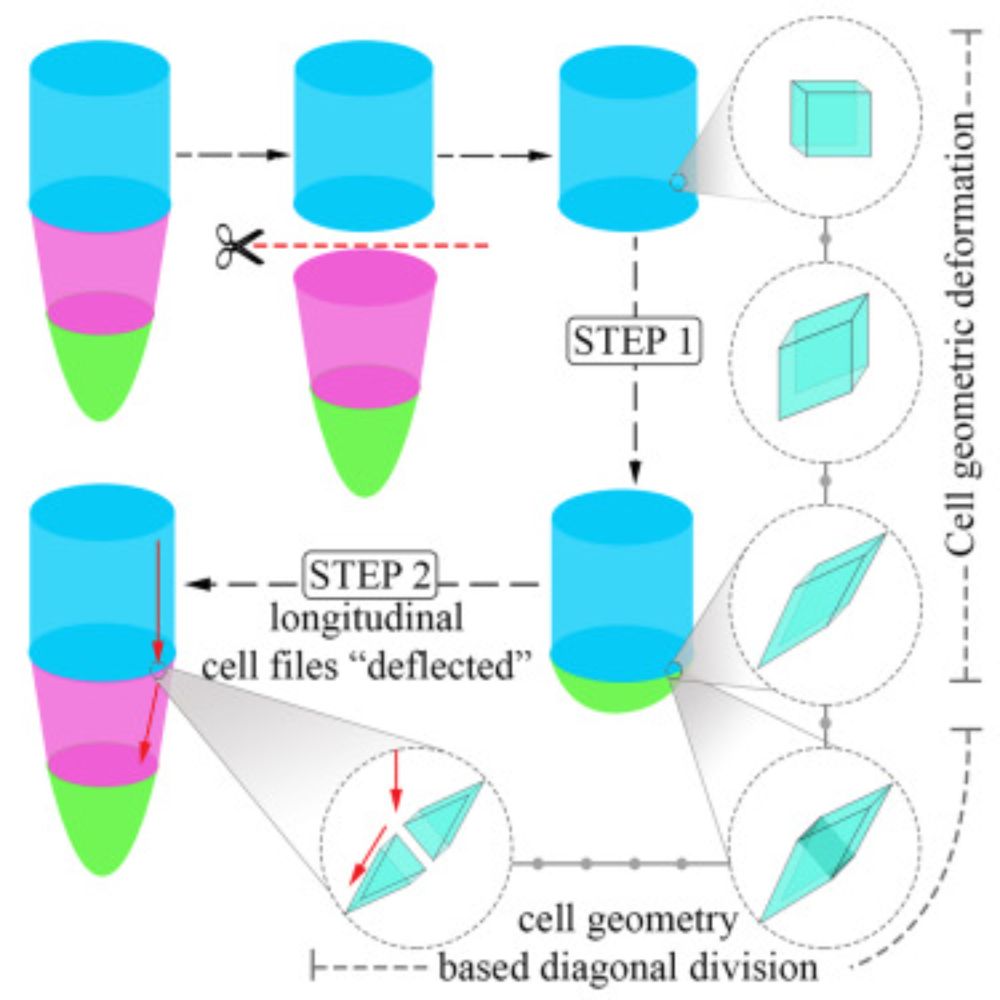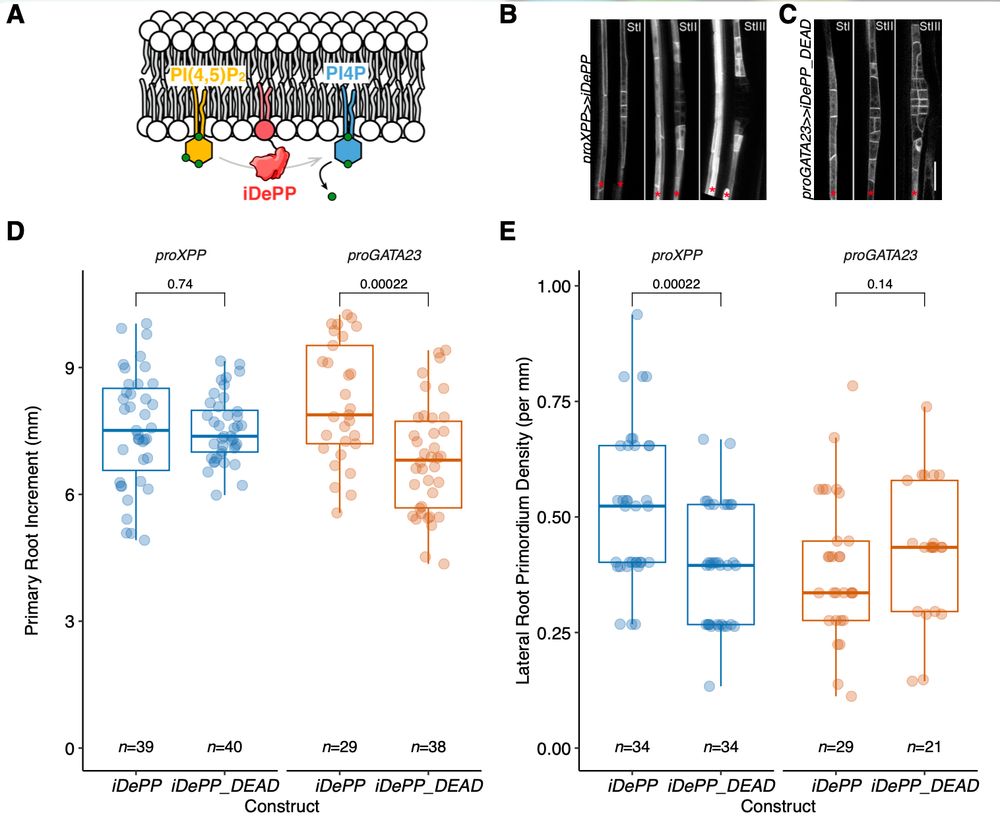http://thelabofregeneration.in/Kalika_Prasad/index.html

1/14 How does an organ rebuild its shape after injury? It's not just about making new cells, but aligning them in the right direction — like bricks shaping a structure. We show that it's all driven by Cell Geometry!
www.cell.com/current-biol...


lab.. when vascular cambial stem cells are lost, neighbouring xylem cells, divide to replace them Auxin transport drive this remarkable positioning of stem cells in vascular cambium during development and regeneration.
www.pnas.org/doi/abs/10.1...
lab.. when vascular cambial stem cells are lost, neighbouring xylem cells, divide to replace them Auxin transport drive this remarkable positioning of stem cells in vascular cambium during development and regeneration.
www.pnas.org/doi/abs/10.1...
www.nature.com/articles/s41...

www.nature.com/articles/s41...
(and in other news, some hope for American Democracy)
🌾 The developing leaf of the wild grass Brachypodium distachyon at single-cell resolution
👉 doi.org/10.1101/2025...
A 70k-cell single-cell RNA-seq atlas of the developing grass leaf—from the shoot meristem to mature leaf tissues. @cerealcell.bsky.social @lbmountain.bsky.social

(and in other news, some hope for American Democracy)

→ academic.oup.com/jxb/advance-...

→ academic.oup.com/jxb/advance-...


We are searching for new AI-Bio faculty at Duke to be part of a new Discovery AI center. Looking for faculty who focus on pushing boundaries in ML model development in a highly interactive environment. DEADLINE for applications- Nov 1st!!
www.nature.com/naturecareer...

You are looking at embryos of a sea squirt. Each of the 'soap bubbles' is a living cell, about a fourtieth of a millimetre in size. The outlines of the cells are visible thanks to fluorescent markers identified by Hitoyoshi Yasuo @hitoyas.bsky.social
see doi.org/10.1101/2024... 🧵

You are looking at embryos of a sea squirt. Each of the 'soap bubbles' is a living cell, about a fourtieth of a millimetre in size. The outlines of the cells are visible thanks to fluorescent markers identified by Hitoyoshi Yasuo @hitoyas.bsky.social
see doi.org/10.1101/2024... 🧵

see doi.org/10.1101/2024...
🧵

see doi.org/10.1101/2024...
🧵
#Cytoskeleton #Biophysics #Microtubules

#Cytoskeleton #Biophysics #Microtubules
How do your conclusions regarding paralog expression divergence compare to the ones from the recent Solanum paralog paper?
www.nature.com/articles/s41...

How do your conclusions regarding paralog expression divergence compare to the ones from the recent Solanum paralog paper?
www.nature.com/articles/s41...
This is two stories in one: a case study/cautionary tale on developing genetic tools in new organisms, and the first hint at a gene regulatory network for choanoflagellate multicellular development (which turn out to involve a Hippo/YAP/ECM loop!) A 🧵

This is two stories in one: a case study/cautionary tale on developing genetic tools in new organisms, and the first hint at a gene regulatory network for choanoflagellate multicellular development (which turn out to involve a Hippo/YAP/ECM loop!) A 🧵
www.cambridge.org/core/journal...

www.cambridge.org/core/journal...
Very exciting opportunity to expand our studies of insect-plant interactions. We have many opportunities available in biochemistry, development, behavior, genetics, evolution, genomics, AI, and even pest control. Interested in any of these things? Reach out!

Very exciting opportunity to expand our studies of insect-plant interactions. We have many opportunities available in biochemistry, development, behavior, genetics, evolution, genomics, AI, and even pest control. Interested in any of these things? Reach out!
The new one is on @stanfordstomata.bsky.social:
nph.onlinelibrary.wiley.com/doi/10.1111/...
#PlantScience #PlantLuminaries
The new one is on @stanfordstomata.bsky.social:
nph.onlinelibrary.wiley.com/doi/10.1111/...
#PlantScience #PlantLuminaries
Such moments remind me how fortunate I am to work with talented lab members (past and present), collaborators, colleagues and mentors all along. Thank you for this opportunity 🙏

Such moments remind me how fortunate I am to work with talented lab members (past and present), collaborators, colleagues and mentors all along. Thank you for this opportunity 🙏
@bar-plantbio.bsky.social
@natanellae.bsky.social

Hear from the 2025 Philip N. Benfey Arabidopsis Community Lifetime Achievement Awardees! bit.ly/naascawards
@plantevolution.bsky.social

More info below ⬇️
Guest Editors: Alex Hughes and Rashmi Priya
📅 Deadline: 1 March 2026
journals.biologists.com/dev/pages/ex...
#DevBio

More info below ⬇️


